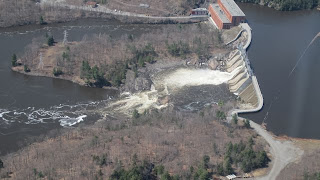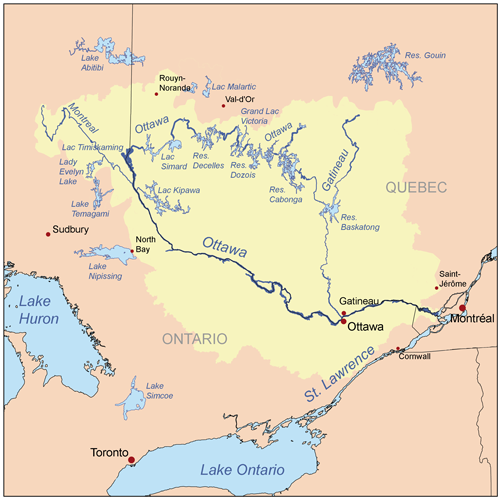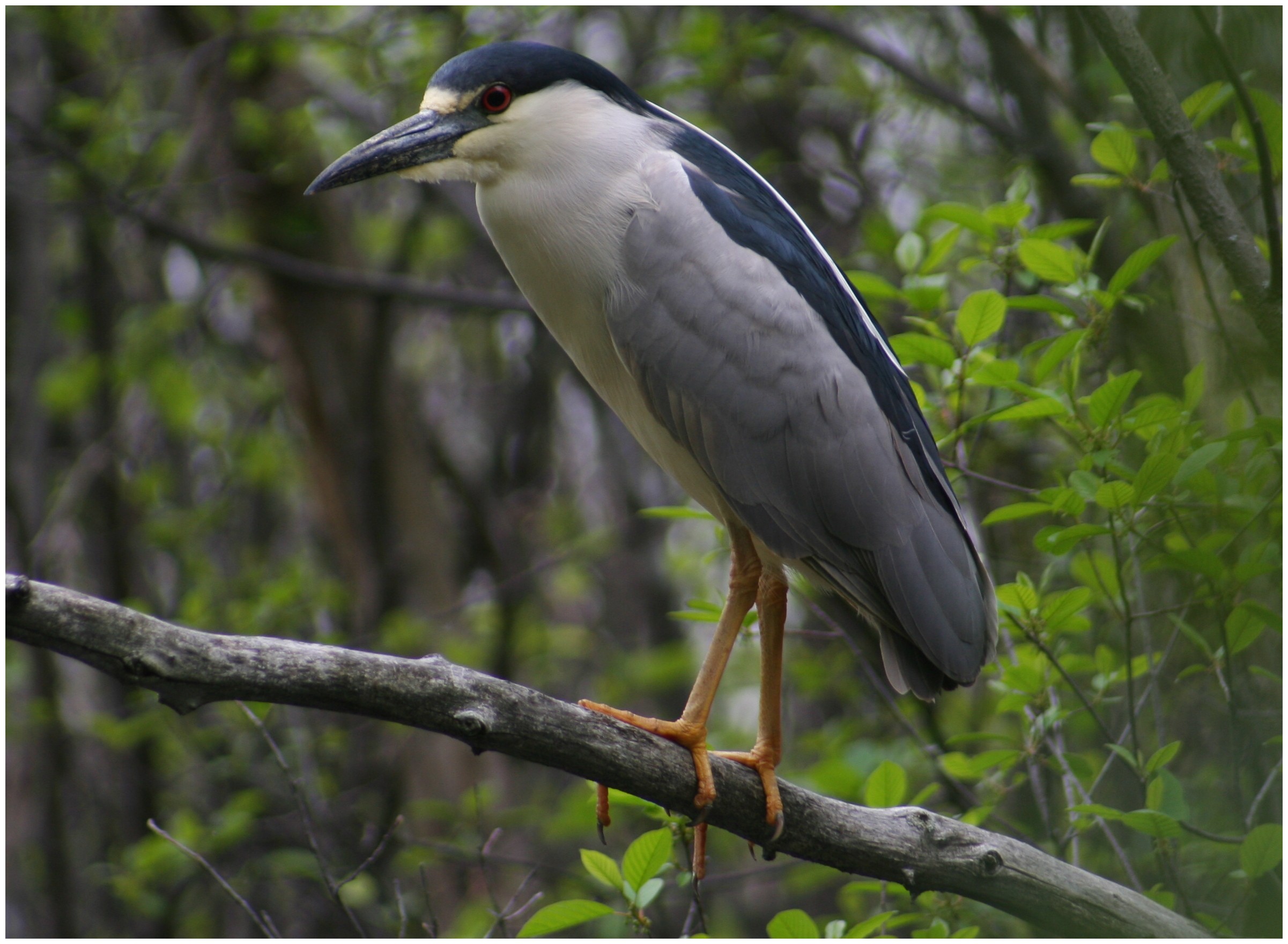On Tuesday this week Chris and I had been married for forty years, and we celebrated on the river, inviting six friends to share a cruise with us on the
electric Duffy boat owned by
Au Feel de L'Eau. The little boat called BES I is kept from May-October at the Casino Marina in Gatineau. Look for the sign advertising
Croisières as you come down the steps on the right hand side of the Casino building at the end of the Boulevard du Casino––and here's the boat:
 |
| Chris already on board, meeting Sylvie, Captain of the boat |
The other vessels moored there are the temporary visitors' boats and the Aquataxi that also belongs to Sylvie and Jean-Marc,
skippers of Au Feel de L'Eau.
 |
The Aquataxi ferries passengers across the Ottawa River
from the Rideau Canal to the Museum of Civilisation and back |
It is a tight squeeze by this dock, but
the Duffy boat's manoeuvrability allows for neat parking and an easy embarkation. We carried snacks on board for supper, everyone wiping their shoes on a carpet before entering the boat which was beautifully carpeted and furnished with soft leather seats, and at 6pm we promptly set sail.
 |
| Chris steering |
As soon as Sylvie had navigated her boat through the narrow channel into Lac Leamy, she let Chris take the wheel and served us wine from the first of three bottles provided by the company––wine glasses, plates and napkins were provided too. The best thing about the cruise is its quietness, the electric engine being so unobtrusive that all you're aware of is the lapping of the water against the hull. No engine fumes pollute the air, either! We had the bonus of perfect weather on Tuesday evening, but if we hadn't been so fortunate, the canopy and roll down blinds would have protected us from wind and rain, and that would have been a romantic experience too. As we cruised, we listened to music through the speakers: Ravel's
Bolero (at less than full volume) and some
piano music.
We took the canal from Lac Leamy to the Gatineau River, sailed under the Lady Aberdeen Bridge at Pointe-Gatineau and thence into the Ottawa River, upstream to the city, not turning around until we reached Victoria Island. On the return journey, the Aquataxi, after its last trip of the day, followed us home by the same route in reverse.
 |
| Entering the channel between Lac Leamy and the Gatineau River |
 |
| Passing the Rideau Falls |
 |
| Below Parliament Hill, half way through the cruise |
We paid for two hours on the water, but Sylvie had noticed I'd been following
Au Feel de L'Eau on Facebook and treated us to extra time, later posting a photo of me on their page:
Our Facebook fan of the month, Mrs Alison Hobbs, got an extra 30 minutes on her cruise for following us on Facebook. Congratulations and thank you, Mrs Hobbs.
Chris didn't steer all the time; I had a turn too, and Sylvie took over for some of the difficult sections, under the Rideau Falls for example, and for the docking procedures. On the return she let Chris take the boat through the mouth of the Gatineau where underwater rocks and shallows have to be avoided, with reference to markers in the river and the chart.
.JPG) |
| My turn to steer the boat, photo by Carol Hinde |
 |
| We don't usually see the Falls from this angle! |
 |
| The navigation chart |
 |
| Sylvie keeping an eye on Chris at the wheel |
At the end of the voyage we had the bonus of a beautiful sunset, as well, and as we set off to drive home, all the fountains down the Boulevard du Casino were floodlit.
Having spent such a splendid evening on the cruise, relished by everyone, I promised that I'd recommend this service as widely as I could. It won the bronze award in the
Services Touristiques category this year (
Grands Prix du Tourisme Québecois) and stands another chance of winning a prize next year.
Note to first time cruisers: Take advantage of the washrooms at the Casino before you embark or when you disembark because this is one thing the boat lacks. Parking at the Casino is free.































.JPG)













_(2).jpg)




